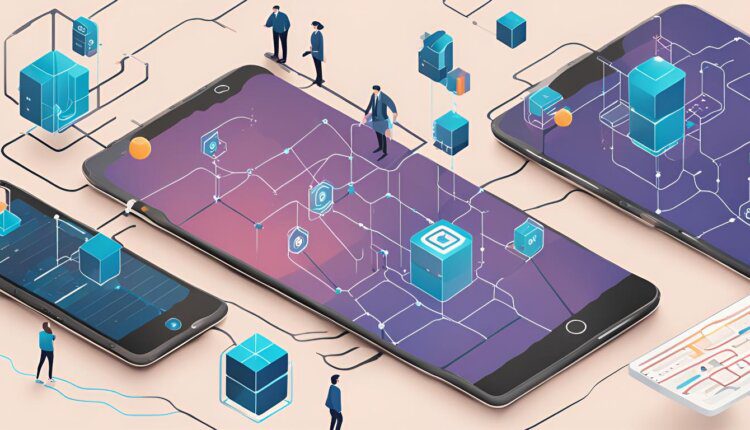Understanding Blockchain Abstraction: Simplifying User Experience and Enhancing Interoperability

Blockchain abstraction simplifies the user experience by masking complex underlying technologies while preserving core benefits. This approach aims to make blockchain technology more accessible, user-friendly, and interoperable across different networks.
Blockchain abstraction is emerging as a key concept in the Web3 ecosystem, driven by the need to simplify blockchain technology user experience while retaining its powerful features. As developers and users strive to make blockchain more accessible, the concept of blockchain abstraction has become increasingly relevant.
What is Blockchain Abstraction?
Online advertising service 1lx.online
Blockchain abstraction refers to the process of simplifying the interaction with blockchain technology by separating the end-user experience from the underlying complexities of the blockchain. This allows users and developers to interact with blockchain applications without needing deep technical knowledge, making the technology more accessible to a broader audience.
Why is Chain Abstraction Needed?
Despite advancements in blockchain usability, certain technical challenges still pose barriers for average users. For instance, new users might struggle with tasks such as buying an NFT on the correct blockchain or transferring assets without selecting the wrong network, which could lead to lost funds. While experienced users might navigate these issues with ease, they can be daunting for newcomers.
Blockchain abstraction aims to enhance usability and interoperability across various blockchain networks. Interoperability refers to the ability of different blockchain systems to communicate, share data, and work together seamlessly. By building applications with inherent interoperability, users can transfer assets between different blockchains without needing intermediaries, simplifying access to DeFi protocols or NFT markets.
Just as the internet became widely adopted by abstracting the complexities of HTTP and TCP/IP, blockchain technology needs to do the same to reach mainstream users. By offering familiar user experiences, such as simple sign-ins and one-click interactions, blockchain abstraction seeks to replicate the usability of popular Web2 applications.
Examples of Chain Abstraction
User-friendly interfaces are a primary example of blockchain abstraction. Wallets like MetaMask and Phantom simplify the management of private keys and transactions. These wallets allow users to interact with blockchains through intuitive interfaces, similar to online banking apps, without needing to understand cryptographic details. MetaMask, for example, enables users to interact with the Ethereum blockchain directly from their web browsers, making blockchain technology accessible to anyone familiar with browser extensions.
Additionally, these wallets have introduced features like in-app bridging or swapping, allowing users to transfer assets between blockchains without needing external tools.
The NEAR Protocol, a Layer 1 blockchain, has also embraced blockchain abstraction by using human-readable accounts, which allow users to interact with the blockchain using names instead of complex wallet addresses. This approach lowers the barrier to entry for new users.
Online advertising service 1lx.online
Middleware solutions like Chainlink provide another layer of abstraction by connecting blockchain smart contracts with external data sources. Chainlink’s decentralized oracle network feeds real-world data into smart contracts, abstracting the complex process of integrating external data with blockchain applications.
Account Abstraction on Ethereum
Ethereum’s account abstraction, particularly through the ERC-4337 standard, represents another step toward simplifying blockchain interactions. This standard allows user wallets to function as smart contracts, eliminating the need to manage externally owned accounts and private keys. Ethereum founder Vitalik Buterin has emphasized that account abstraction offers enhanced security and convenience for developers and users alike.
ERC-4337 enables advanced features like multi-signature wallets, social recovery mechanisms, and custom validation rules within user accounts. These features provide users with more flexible and secure ways to manage their accounts, reduce the risk of hacks, and simplify account recovery.
Additionally, ERC-4337 facilitates gas fee abstraction, allowing users to pay transaction fees with tokens other than Ether or even have third parties sponsor their fees, further enhancing the user experience.
Online advertising service 1lx.online
Conclusion
Blockchain abstraction is poised to play a crucial role in making blockchain technology more accessible and user-friendly. By simplifying complex processes and enhancing interoperability, blockchain abstraction could be key to driving broader adoption of blockchain technology, much like how the internet and operating systems made digital technology accessible to the masses.
Our creator. creates amazing NFT collections!
Support the editors - Bitcoin_Man (ETH) / Bitcoin_Man (TON)
Pi Network (Guide)is a new digital currency developed by Stanford PhDs with over 55 million participants worldwide. To get your Pi, follow this link https://minepi.com/Tsybko and use my username (Tsybko) as the invite code.
Binance: Use this link to sign up and get $100 free and 10% off your first months Binance Futures fees (Terms and Conditions).
Bitget: Use this link Use the Rewards Center and win up to 5027 USDT!(Review)
Bybit: Use this link (all possible discounts on commissions and bonuses up to $30,030 included) If you register through the application, then at the time of registration simply enter in the reference: WB8XZ4 - (manual)
